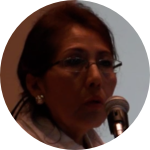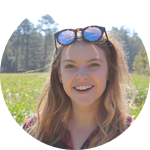About This Project
A state of emergency has been declared in Madre de Dios, Peru due to high levels of mercury (Hg) exposure as a result of gold mining in the region. Hg toxicity has a plethora of devastating neurological and cognitive effects that can ravage vulnerable communities. The goal of this project is to reduce Hg levels in mothers and children through education and the construction of high antioxidant food baskets of locally acquired foods.
Ask the Scientists
Join The DiscussionWhat is the context of this research?
While Hg exposure has been assessed in artisanal and small-scale mining communities, it is seldom examined with regard to the non-mining communities adjacent to the mining areas. Increased Hg exposure through fish consumption has been identified in populations in the Amazon, but the paucity of available data hinders effective intervention. These native communities are thought to experience elevated Hg exposure as a result of dietary factors, most notably, fish consumption. Biomagnification in high trophic level fish species is believed to be a significant risk factor for Hg exposure. Unfortunately, there is a significant lack of scientific evidence to elucidate other dietary options that may positively, or adversely, impact Hg toxicity.
What is the significance of this project?
With the declaration of a state of emergency in Peru, it is imperative that Hg toxicity is addressed in mothers and children in order to preserve the entire next generation of the native communities. Hg toxicity in children causes permanent, irreversible neurological damage and cognitive impairment. With the native communities experiencing a disproportionately high fraction of negative health outcomes, an economically sustainable intervention needs to be implemented in order to protect the next generation. The study aims to address these concerns with regard to native riverine communities in the Amazon, and develop a dietary intervention capable of mitigating Hg exposure.
What are the goals of the project?
The goal of this project is to test the efficacy of two approaches in reducing Hg levels in 3 highly exposed indigenous communities in the Peruvian Amazon (Boca Manu, Diamante, and Isla de los Valles). We aim to develop and implement an educational curriculum for children and adults on sources of Hg exposure, and construct a high antioxidant food basket of locally acquired foods. Previous research has indicated the potential relationship between reduced Hg levels and diets rich in select foods, such as quinoa and kiwicha. Comparing blood Hg levels before and after dietary changes will let us know how effective the intervention was. We anticipate that these two intervention strategies will empower communities to take charge of their health through simple dietary adjustments.
Budget
The funds raised will go towards laboratory testing of blood and urine samples collected at the beginning and end of the study, as well as the food baskets. In each of the 36 households that participate, we will test one child and one mother, resulting in a total of 144 blood mercury tests. We anticipate the cost of 60 days worth of foodstuffs for 24 households to cost approximately $2000 when bought in bulk.
Endorsed by
 Project Timeline
Project Timeline
Mar 20, 2017
Project Launched
Apr 10, 2017
IRB submitted for review
Jun 01, 2017
Travel to Peru
Meet the Team
Joshua Grubbs
Studying environmental epidemiology has allowed me to pursue two of my greatest interests – human and environmental health. The topic encompasses some of the most engaging parts of the natural and social sciences. Even more importantly, the interface between the two disciplines lends our work to interventions that improve human health and make a real impact on people’s lives.
I am currently an undergraduate student pursuing my degree in chemistry and global health.
Huijia Yu
I am studying Statistics and Computer Science at Duke University, but am deeply passionate about Global Health, as the analysis of populations and disease relies on statistical science. I loved being a part of the project last year. It opened my eyes up to how significant of an impact individuals can make with the right team and shared goals.
Luiza Rezende Izoldi Perez
I have always known that I wanted to be a doctor. I am concerned with health, but not necessarily just individual care. Looking at a population is very important. Growing up in Brazil, I witnessed a lot of social problems and inequality in daily life. I thought by studying global health that I could do something bigger than simply caring for one person at a time. I want to dedicate my time to making a difference in the larger scheme.
Anson MacKinney
As a sophomore studying Biology, with a double minor in Global Health and Sociology, I recognize how much of health is defined by our environments. I came to Duke knowing I wanted to be involved in a research project that connected my passions for language and culture, scientific research, community involvement, and global health. In the Global Health FOCUS program my freshman year, I was made aware of how much inequality and health problems can be influenced by research and involvement. In my year and a half working on an independent study project in a Duke Medicine hematology lab under Dr. Rahima Zennadi, I’ve developed an even greater interest in the problem-solving aspect of research and discovery.
I want to be a part of contributing a significant body of research that can have a direct, tangible, and large-scale impact on the health of populations internationally. This project will elicit that positive impact.
Karina Martinez Romo
Taking a course about the conservation of wild India pushed me to see the connections between the environment, global health and psychology; my fields of study as an undergraduate student. Our environment informs both the individual and collective human experience on biological and psychological levels, which in turn shape our impact on the environment, and vice versa. There is inherent value in both our natural world and health, however, the relationship between the two isn’t always simple. Having entered the field of environmental epidemiology allows me to explore questions of community empowerment, economic development, ethics and sustainability, while simultaneously aiming to make a positive impact on the lives of others.
Delaney Dryfoos
I began studying environmental epidemiology from a strictly medical perspective, but have realized that the impact we make in the health of humans allows not only individuals to survive, but entire communities and civilizations to survive. The preservation of human health also preserves cultures, languages, artwork, and all of the amazing cultural aspects of humanity. With the additional environmental component added, we can strive to preserve not only human culture, but also the habitat for wildlife and nature.
I am a student pursuing degrees in biology, global health, and policy journalism/media studies.
Liane Emerson
As a student in Global Health and Biology, I recognize how much health is determined by our physical environment. This project combines every aspect of my interests: ecology, disease, international travel, and community engagement. I look forward to continuing to be at the forefront of research that has a tangible and direct impact on communities. As a member of the Bass Connections team this past year, I have learned how determined and cooperative this team can be, and am continually amazed at the product of their passions.
Jennifer Callejas
The Environmental Science and Global Health majors at Duke University have opened my eyes to my role as a student in a global environment. Throughout my studies these past three years, my interests in global engagement have grown and developed. This research team has been a pivotal part of that development, as the experiences I had this previous year as a member of the team demonstrated the power of research in an increasingly global world. This project, which places even more of an emphasis on the environmental influences on health, is representative of the current needs of Peru with the crisis surrounding rising levels of toxic metals.
Project Backers
- 40Backers
- 110%Funded
- $4,626Total Donations
- $115.65Average Donation









